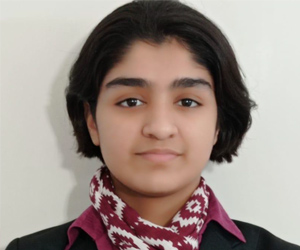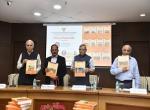On the ninth of February, 2022, the Vivekananda International Foundation (VIF) organised a Vimarsh on the “Earth Sciences and their Importance for the Nation's Well-being”. The session encompassed a series of introductory remarks by Dr Arvind Gupta, Director VIF, and a presentation on the stated theme by Dr Shailesh Nayak- Director of the National Institute of Advanced Studies and Distinguished Scientist from the Ministry of Earth Sciences. The presentation addressed four key sectors of Indian studies in the Earth Sciences: the development of warning systems for natural hazards, the significance of weather and climate in sustaining local agriculture, the sustainable utilisation of the Blue 'Ocean' economy and the exploration of ocean mineral resources. Alongside touching base on a multitude of India's advancements within the field, Dr Nayak frequently emphasised their implications on the country's societal interests and security.
The presentation began by outlining India's agendas within the Earth Sciences: promoting the discovery of new perspectives, bettering the understanding of earth processes and applying acquired knowledge towards sustainability and the production of public goods. Moreover, Dr Nayak also elaborated on the nature of anthropogenic interactions with earth systems and the means to predict the consequences of these interactions.
Accordingly, Dr Nayak dwelled upon the early warning systems for natural hazards, viz., Cyclones, Tsunamis, and Earthquakes. Concerning cyclone forecasts, the Indian Meteorological Department (ESSO-IMD) can now accurately detect a cyclone's formation, areal extent, location, movement and intensity based on INSAT (satellite) data. Having established a Regional Specialised Meteorological Centre as part of the World Meteorological Organisation, India regularly supplies its fellow states in the Bay of Bengal and the Arabian Sea with relevant advisories. The realm of Tsunami forecasting is no different, and India is a pioneer in the same. With a total of eighteen hundred coastal forecast zones in its Web-GIS based service, India was the first to implement a simulated model output and an operationalised location-based forecast. While research on earthquake forecasts is yet to materialise into a definite practical system, the National Centre for Seismology has been conducting a series of avant-garde experimental initiatives in Koyna to understand the intricacies of this natural disaster better.
Having said that, Dr Nayak also presented a range of shortcomings in the current forecast models. He noted a need to holistically deduce the impact of anthropogenic activities on extreme events, and establish a system of advisories on thunderstorms and western disturbances. Moreover, he also emphasised the importance of developing studies on paleo-tsunamis.
As Dr Nayak explored the significance of weather and climate in sustaining local agriculture, he drew particular focus to the Indian Monsoons. Having established a seasonal prediction system with a skill denotation of 0.71, the Indian Institute of Tropical Meteorology (IITM) has been recognised as a global centre for Monsoon research. The IITM's research is of the utmost poignance due to its capacity to equip farmers with biweekly agro-met advisories. With more than 40 million farmers employing these advisories to direct their farm operations, India noted a 10,000 crore annual economic benefit from the scheme this past year. Furthermore, Dr Nayak also threw light upon the decreasing precipitation rates and their implications on ground-water levels, terrestrial ecosystems and the agricultural market. In view of the changing water cycle, he recommended developing a comprehensive accounting of spatial and temporal freshwater availabilities for local and regional needs. Such a system should assess the needs of humans as well as those of the terrestrial ecosystem and biota. Dr Nayak also referenced the multi-sensor moored observatory in the Arctic's Kongsfjorden fjord to decipher the Arctic's response to climatic variability and its influence on the Indian Monsoon system.
During the presentation, Dr Nayak also shed light upon India's sustainable utilisation of the growing Blue 'Ocean' economy. He specifically highlighted the satellite-based fish advisories which are routinely provided to local fishers. With a success rate of 80%, these advisories have assisted fishermen in experiencing an additional income of Rs. 17 800 per trip. Additionally, the transfer of biotechnological resources to local fishermen has helped develop an indigenous market for fish previously imported into the country: Ornamental Fishery, Black Pearl and Cobia and Milk Fish. Such a provision would guarantee an additional income worth one lakh rupees to multiple fishermen. At the same time, Dr Nayak emphasised the depleting Indian coastline and the restorative and precautionary measures that the Ministry of Earth Sciences has been implementing to counteract the same.
Dr Nayak also addressed the potential for exploring ocean mineral resources and developing the required technology to harness these resources. Having identified sources of poly-metallic nodules, sulphides and Gas Hydrates worth $187 billion, the Indian government is currently developing the required Deep-Sea Technology to access them.
Towards the end of the presentation, Dr Nayak stressed the importance of developing a cooperative framework of engagement between the Earth System (knowledge), the Human System (behaviour) and the Social System (governance, policy and infrastructure).
Dr Gupta then took over and shared his concluding remarks. After having thanked the speaker for his informative and insightful presentation, he opened the floor for further discussion.




Post new comment